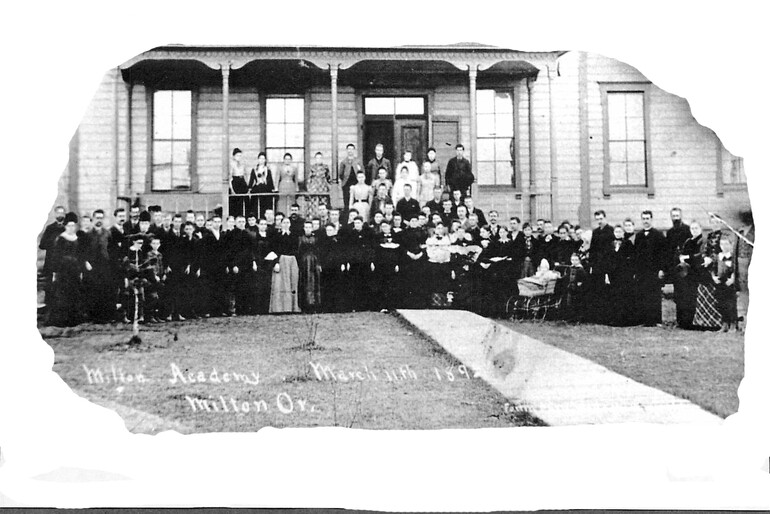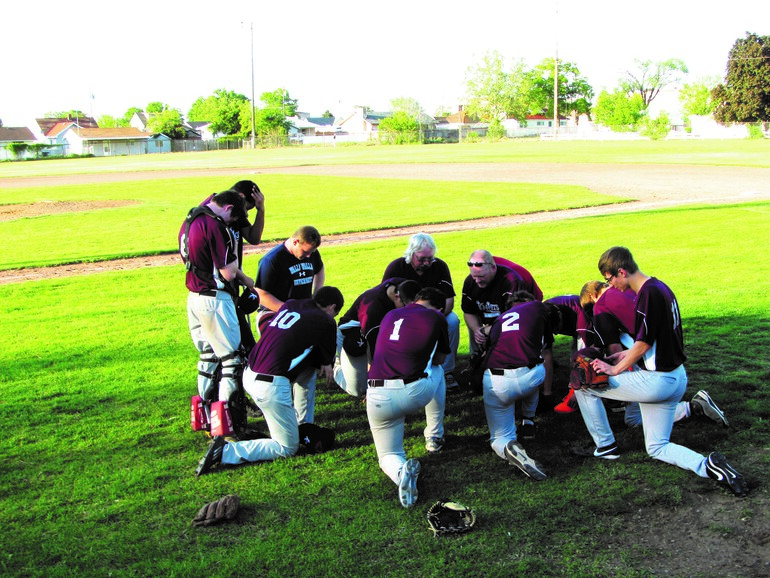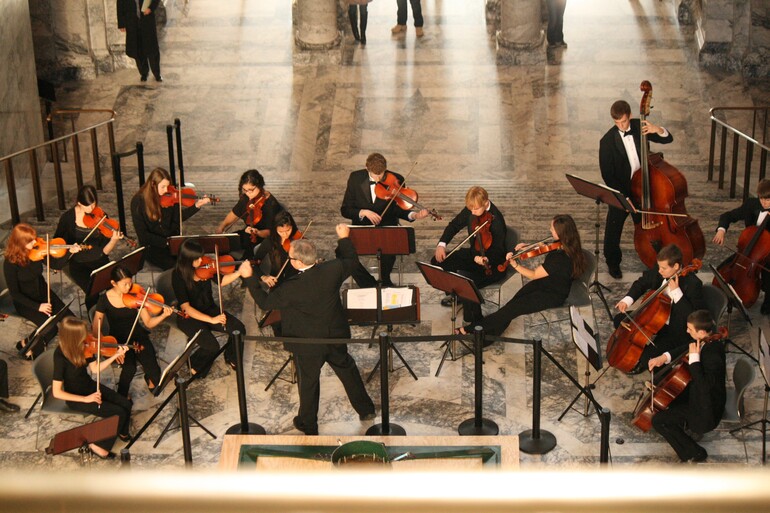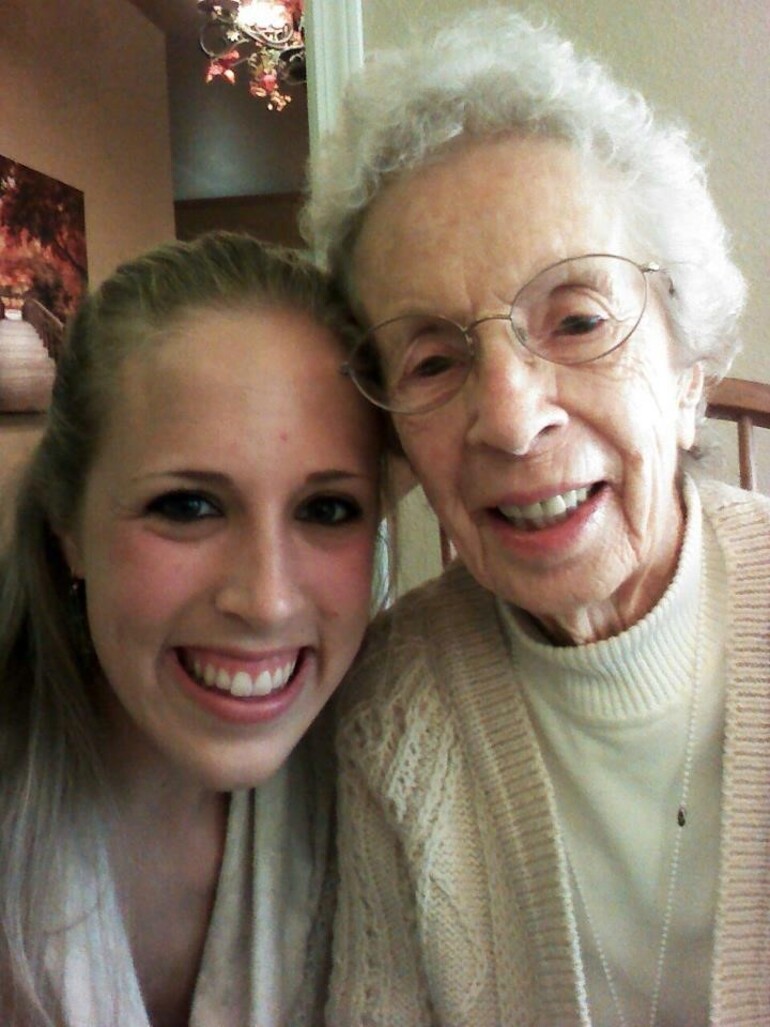She gently flips through the pages of the 1937 yearbook, with hands that have borne the remarkable grace of life. Jessie Thomsen, 96, is recounting the experiences of her senior year at Walla Walla College Academy in College Place, Washington.
“What I remember most is how hard on us they were,” she says. “They expected very good work and for us to put effort into it. It wasn’t fun, but at the same time we knew how fortunate we were to be getting an education.” Jessie stops for a moment to read the quote next to her name: “Her voice was ever sweet and low —.”
“Still important,” she says with a twinkle and in an exaggerated low, sweet voice.
Sometimes, the groundbreaking uniqueness of 19-century Adventist education gets lost in the noise of the 21st century. Yet today, more than ever, the principles on which primary and secondary Adventist schools were built are essential to student success.
When Ellen White and her team were struggling to develop an educational institution based on biblical principles, they were part of an American movement of lonely voices crying in the wilderness. Traditionally, an educated person was largely steeped in a classical education that focused on mastery of ancient languages and ideas, rather than practical skills and spiritual values.1 But White and her colleagues believed that God’s plan was to educate the whole person for His work, rather than focus on education as a means for self-aggrandizement and personal success.
That movement carried over to the Northwest. Local churches began to create small primary schools. By 1888, two boarding academies were operating in Oregon: Milton Academy in Milton and North Pacific Academy in Portland. Both of these academies did well, but as Walla Walla College was in development, the decision was made to close the academies to support the new regional school.2
Milton Academy became affiliated with the new college in 1892 as Walla Walla College Academy. As the college grew, however, it became clear that once again the academy should be an independent institution. In 1965, with a new building near the college campus, it became Walla Walla Valley Academy (WWVA) where it stands today. Many consider it to be the longest consecutively operating academy in the Northwest.
In 2005, 68 years after Jessie’s graduation, her granddaughter, Kelsey Remboldt Lieuallen, graduated from WWVA. “Grammy and I are incredibly close, so much so that we often joke we are more like sisters than a grandmother and granddaughter,” Kelsey says. “I loved walking the halls and pointing out her picture to people. It is something that connects us further, knowing her legacy was with me every day and allowing our family heritage to not be a thing forgotten.”
So what makes our church's investment in Adventist education such a unique and valuable opportunity for our kids? The biblical principles that were laid out then are the same principles that guide us today: “To restore the image of Christ in those placed under their care.” To restore the broken relationship between God and the student. This is the primary purpose.3
Kelsey believes this is absolutely true. “The most significant thing WWVA gave me was a sense of security and belonging. The teachers are deeply invested in our success and well-being. To this day, I keep in close contact with almost all my former classmates. I feel WWVA truly embodied the love and acceptance Jesus has for us.”
In 2010, Elissa Kido of La Sierra University in California and director of the CognitiveGenesis research project explained this long-standing success: “We believe it lies in the holistic approach these schools take — a commitment to education, mind, body and spirit. Some of the biggest predictors for student achievement, according to statistical models we developed, include whether students have positive spiritual outlook, have a healthy relationship to their parents and take care of their own health. These are all attitudes that can be cultivated, and they point to the importance of the holistic approach.”4
Today, this remains the primary mission for educators and families across the Northwest. We are confident of the success of these principles and have seen the success they provide our students. However, as we head deeper into the 21st century and face a change in culture and demographic realities, continued success requires us to reassess the context of our principles and to bravely face new and difficult challenges.
We have a rich and successful product to offer not only children within our own denomination, but students from every walk of life seeking the kingdom of God. And God’s plan for our children has, and will continue to, yield fruit. Our responsibility is to tend the field and to remain committed to growing strong, connected children.
- Herbert E. Douglass, Messenger of the Lord (Nampa, ID: Pacific Press Publishing Association, 1998).
- Terrie Dopp Aamodt, Bold Venture (College Place, WA: Walla Walla College, 1992).
- Ellen G. White, Education (Nampa, ID: Pacific Press Publishing Association, 2002).
- Elissa Kido, "For real education reform, take a cue from the Adventists," The Christian Science Monitor (November 15, 2010).
















